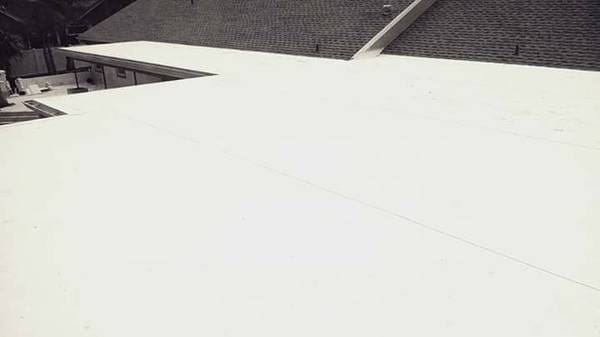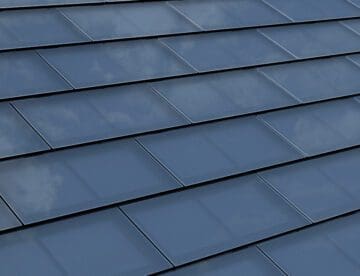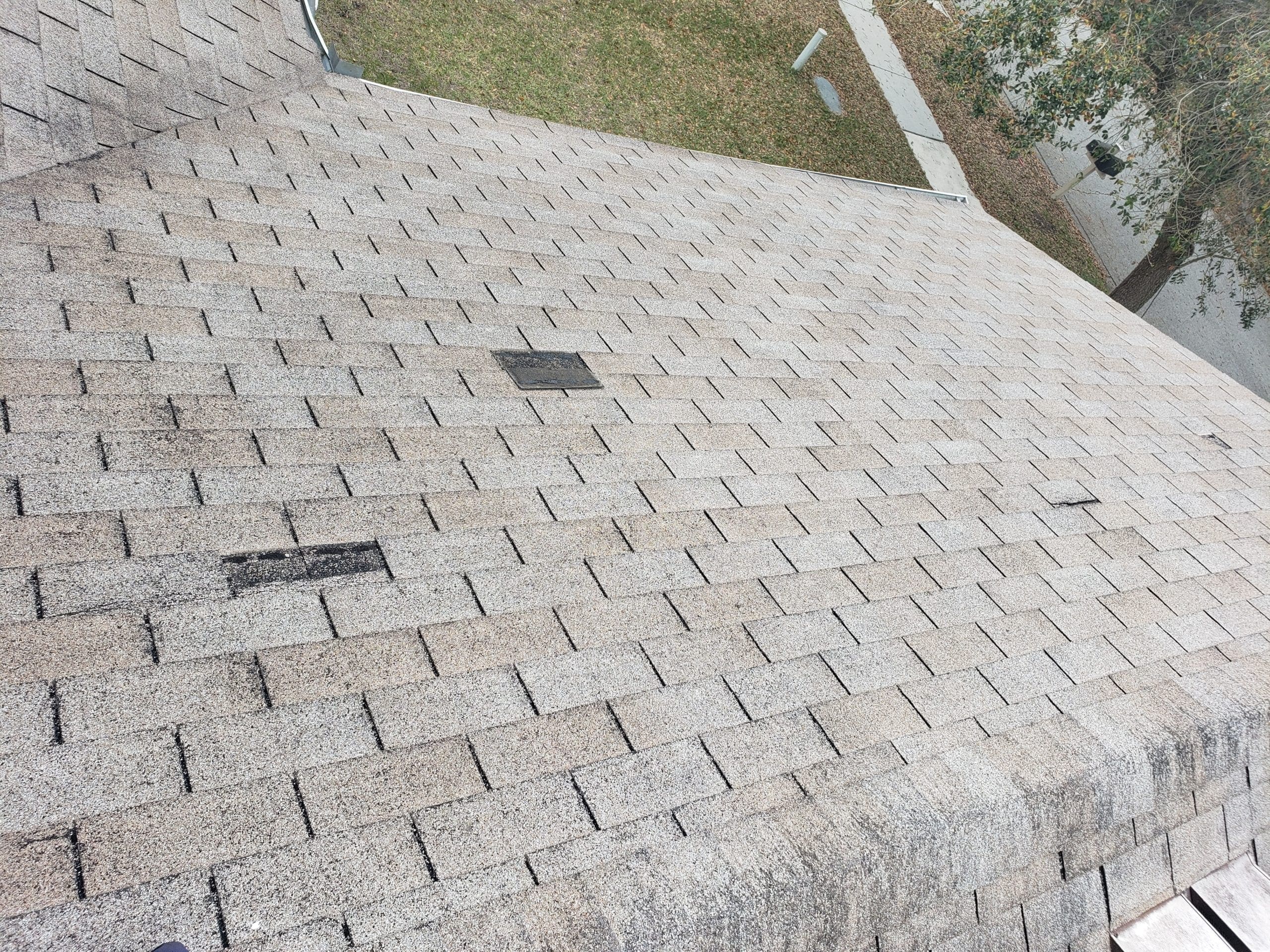If you have a flat or low-slope roof on your home, you’ll need a specific system made just for this type of roof. You can find a comparison of membrane roofs, built-up roofing (BUR), and modified bitumen roofing in a previous article, but in this article we’ll compare the three most popular choices for membrane roofs: EPDM, TPO, and PVC roofing.
These types of membrane roofs are more similar than different, but the materials do have some significant differences. EPDM and PVC have been around for decades and have a well-known track record. TPO is a newer material and has been in widespread use for just a couple of decades. Whatever you choose, you’ll probably want to add some rigid insulation to provide a proper substrate for your new membrane roof, and to save money on heating and cooling. So how do these materials compare?
Why Choose EPDM Roofing?
EPDM is a a synthetic rubber made from petroleum products—oil and natural gas. The name is shorthand for ethylene propylene diene monomer. EPDM has been the budget choice for decades, as it’s less expensive than PVC, which has also been around for awhile. TPO, however, can sometimes come in at a lower total cost, so it’s good to get a quote for both materials.
One advantage of EPDM is its availability in hefty widths. That lessens the number of seams needed on your roof, which is always a plus. EPDM uses adhesive for the seams, though, which is the major weak point of this membrane type. Hot welding of seams, as is done with TPO and PVC, is a stronger and more reliable method than adhesive. EPDM seams will often show wear and some separation over time, so you must have your EPDM roof inspected and repaired regularly. If you don’t keep up with this simple maintenance, you’ll likely see the roof fail in less than 15 years.
One other drawback, especially relevant in sunny Florida, is the typical dark gray color of EPDM membranes. A gray roof will be substantially hotter on a sunny day than a white or light gray roof. Fortunately, EPDM now is available with a white top layer to keep the temperature down. It’s worth it.
Overall, EPDM remains a solid choice. UV rays don’t affect the membrane, and the material is resistant to fire and cracking, as it stays flexible over time. It’s just the seams that you must keep an eye on.
The Pros of EPDM Roofing
- Price: EPDM will be either the lowest-cost option, or close to it.
- EPDM is well known to installers, with ready availability and straightforward installation.
- EPDM can be long lasting, with a lifespan of up to 20 years.
- Using EPDM with 1-3″ of polyiso insulation can provide you with an energy-efficient roof, especially if you choose the white finish.
The Cons of EPDM Roofing
- Your new EPDM roof may not last 10 years if you don’t maintain it.
- The standard dark-gray finish will be hotter than light-colored TPO and PVC.
EPDM Roofing Cost
You’ll end up paying from $4-8 per square foot for your new EPDM roof. Tearoff, which is typically needed, will be $1-4 per square foot, and polyiso insulation will be in the range of $1.50-$3.50 per square foot, depending on the thickness you choose.
For that investment, you can get a roof that could last 20 years if you maintain it properly, which usually means periodically resealing the seams and around penetrations. After an unusual cold snap or violent storm, it’s a good idea to check the seams, as those events readily reveal any weakness in your roof.
Why Choose TPO Roofing?
A TPO (thermoplastic polyolefin) membrane is the newest type of membrane roof in this group. It’s a single layer of thermoplastic that uses heat-welded seams, as PVC does, which is the most durable way to handle seams. The membrane can be fully adhered with adhesive, or can use fasteners. A fully adhered membrane is typically more expensive.
TPO’s white color helps to keep the overall roof temperature down, which saves you money on your air conditioning usage. Though it’s the newest type of membrane, the latest formulations of the material show excellent durability and you may get a warranty of up to 20 years. GAF, for example, offers a 20-year warranty with some of their TPO membrane systems.

The Pros of TPO Roofing
- Provides a roof with strong, heat-welded seams for less money than PVC.
- Not affected by UV rays.
- Light color reflects the sun’s heat better than EPDM.
- Resists algae and mold growth.
The Cons of TPO Roofing
- Shorter-term track record compared to EPDM and PVC.
- Expertise required for high-quality, heat-welded seams.
- Some cheap products may last only 10 years or so.
TPO Roofing Cost
Your TPO roof will cost you from $4.50-$14 per square foot. You’ll also need to pay for tearoff at $1-$4 per square foot, and rigid polyiso insulation at $1.50-$3.50 per square foot.
Why Choose PVC Roofing?
A PVC (polyvinyl chloride) membrane roof will cost more than EPDM or TPO. It will also give you the longest lifespan and the best warranty. You’re correct in surmising that PVC is thus the most durable choice of membrane roof. With a light surface color to reflect heat from the home, along with hot-welded seams for superior strength, a PVC membrane roof has been proven to endure. In fact, PVC membranes have been used for more than 50 years.
The Pros of PVC Roofing
- Superior strength and durability, which means a lifespan of 20+ years.
- Longest warranty, up to 25 years.
- Chemical and fire resistant.
- Recyclable, so when it’s time to replace it, you don’t have to add it to the landfill.
The Cons of PVC Roofing
- Highest initial cost. However, if your PVC roof lasts twice as long as and EPDM or TPO roof and costs just 25% more, you’re still coming out ahead over time.
- Tearoff is recommended, which adds to the cost of your re-roofing job.
- Heat-welded seams—the most durable approach—demand expertise for maximum durability.
PVC Roofing Cost
Yes, PVC will be at the top end of the range for membrane roofing, coming in at roughly $8.50-$15.50 per square foot. You’ll also be paying for tearoff at $1-$4 per square foot, and rigid polyiso insulation at $1.50-$3.5- per square foot.

Here’s a handy site for calculating your new roof cost. Of course, this will give you a rough estimate, but it’s a place to start. A full quote from a manufacturer-certified roofing contractor will give you a more precise idea of what your roofing job will entail. Does your home have skylights, multiple penetrations, or parapet walls? All those details factor in to what a new roof costs.
We’re Here When You Need Us
If you’d like to talk about replacing your flat roof, give us a call at 813-373-9088. Our team has more than 40 years of experience in roofing. You can also use this form and ask us, “what’s the cost to replace my flat roof?” and we will contact you.



